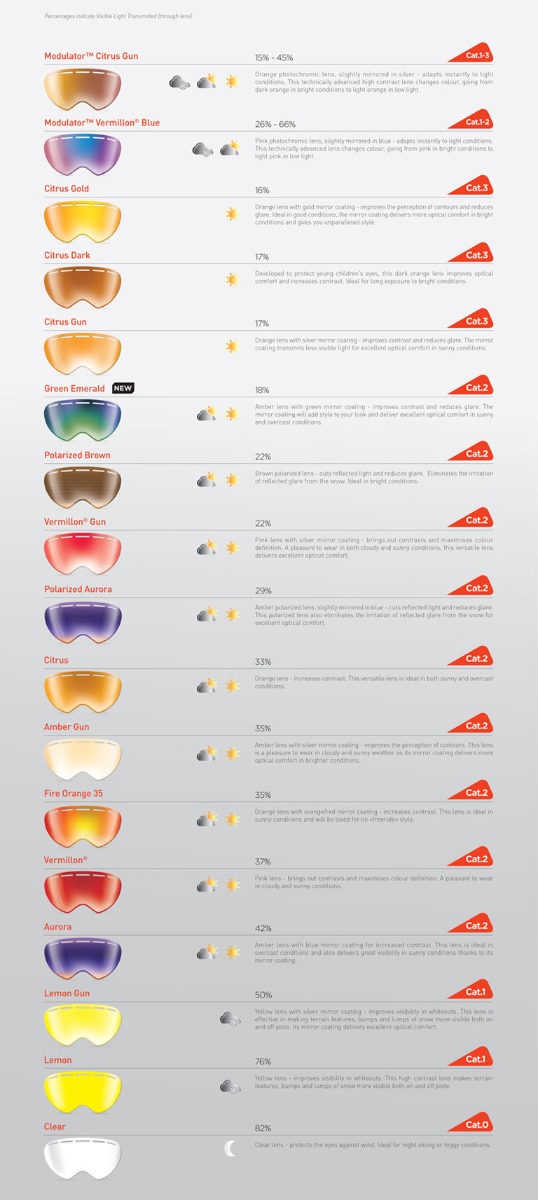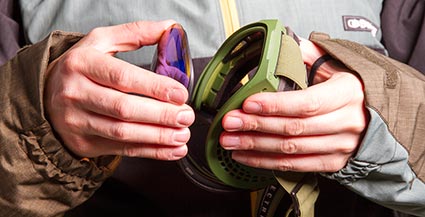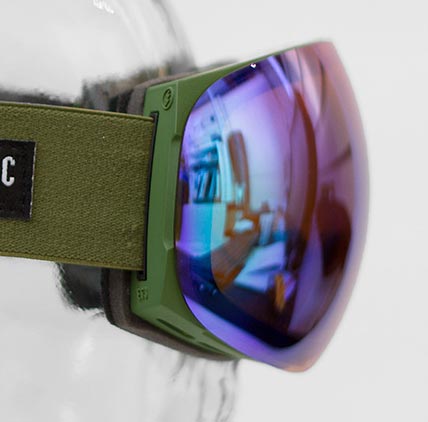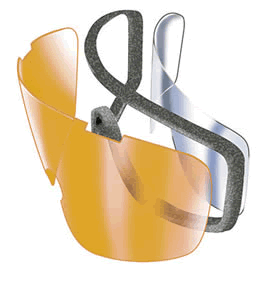We use cookies to make your experience better. To comply with the privacy directives, we need to ask for your consent to set the cookies. Learn more.

What to Look For in a Ski Goggle
Ski goggles are a necessity if you are going to be hitting the slopes this winter. They protect your eyes from cold air when you are moving at speed, from bright direct light from the sun and indirect light that is reflected by the snow. Sunglasses can be used to provide protection from these elements but ski goggles perform far better as they act as a sealed unit around your eyes.
There are many aspects to consider when looking to purchase a pair of ski goggles, each of which are as important and significant as the next. With one exception; the fit. All faces are different, a goggle that is comfortable to one person can be like torture to another and as it is likely that you will be wearing the goggle for many hours at a time, it is important that you find a goggle that sits comfortably and the foam of the goggle touches your face at all points. We would always recommend that you come into store and try the goggle on (if possible with your ski helmet) before purchasing. Having uncomfortable pressure on your nose or cold air blasting your eyeballs when on the mountain will put a significant downer on your day.
Ski Goggle Lens Categories
Ski goggle lenses are rated by the amount of light they restrict from passing through the lens. All modern ski goggles offer full UV (A, B and C) protection and lens categories range from 1 to 4 that are based on visible light transmission (VLT) ratings and are as follows:
- Category 1 lenses restrict little if any light, and are used more often to increase contrast (yellow lenses) in flatter light conditions that are experienced in overcast or snowy conditions.
- Category 2 lenses are arguably the most popular choice for ski goggles. Offering greater light restriction for when the sun shines while still not being too dark that when the sun goes in you can still adequately see.
- Category 3 lenses are probably the second most popular choice and are darker still. These lenses are ideal for when more sun shine is expected and glare could be too much of an issue for Cat 2 lenses.
- Category 4 lenses are, of course, for extremely bright conditions and offer no real flexibility in light conditions. However, if the sun does go in these could prove to be to dark for flat light and could even prove to be dangerous.
Please note that a Category 2 in a Salomon goggle may have a completely different feel to that of a Category 2 Bollé goggle and may appear to be darker or lighter by comparison. Each manufacturer employs different shades of colour and lens coatings to achieve what they believe to be the optimum for any given light condition.
In an ideal world you would be able to have a lens that would change opacity with the light conditions... and as if by magic, you can. Photochromic lenses have been available in general eyewear for some time and within the last four years have been adopted for use in ski goggle manufacture. Lenses are available that can change their opacity from Category 1 to 2, or 1 to 3 depending on the amount of UV light they are submitted to. These photochromic ski goggles are slightly more expensive than non light sensitive goggles, but do offer more versatility as a result.

One of the latest developments in ski goggles is the introduction of interchangeable lens systems. These offer dedicated lens choices that are more precise and arguably more suited to exacting light conditions. Where a variable light sensitive lens may be rated as Category 1 there will be no change in colour to improve contrast, where a dedicated yellow lens would be the optimum choice for certain light conditions. Also, some believe that a dedicated Category 3 lens performs better at that Category than a photochromic lens. The interchangeable lens system goggles tend to be more expensive still, but offer the most comprehensive way of being prepared for any light conditions you may encounter.
Goggle Lens Shapes
Flat Lenses - As the name suggests the lens is flat and is bent, or shaped by the goggle frame. These lenses are used in cheaper goggles as the lens is not pre-shaped.
Spherical Lenses - These are pre-shaped lenses and offer better peripheral vision and as a result of them being pre-shaped, less distortion than that of flat lenses.
Ski Goggles For Glass Wearers
Ski goggle manufacturers haven't forgotten glass wearers and most make specific over the glasses (O.T.G) models of their ski goggles. These models include a greater depth between face and lens and pre-cut or curved channels are made in the frame and face foam to accommodate the arms of the glasses.
Single & Double Lenses
Single Lenses - are pretty rare now and will only be used in the cheapest of ski goggles.
Double Lenses - are far superior at reducing fogging than single lenses and are a feature in most modern ski goggles. Venting is also employed in many goggles to further reduce fogging by allowing air to circulate between the face and the lens and between the lenses themselves.
Face Foam
In between the frame of the goggle and your face, foam is used to create a seal to stop any unwanted air or light entering behind the lens. This face foam is applied in varying manners that consist of single, double and triple layered foam. In multi layered foam applications the different layers of foam are of different densities. In double layer face foam a thicker layer foam is generally placed directly on to the frame and a thinner layer of foam is placed as an outer layer, which is normally a micro fleece, to provide a comfortable fit. In triple layer face foam there is still the thinner outer layer but the inner layers consist of two different density foams that act together to provide a secure yet comfortable fit.
Chris, from Three Zero, Cornwall gives a detailed insight in to the technical aspects of ski goggles. Explaining features like Lens Categories / V.L.T lenses, Dual Lenses and Inter Changeable Lens systems this video guide will help you chose the right pair of ski goggles when visiting the mountains this winter.
